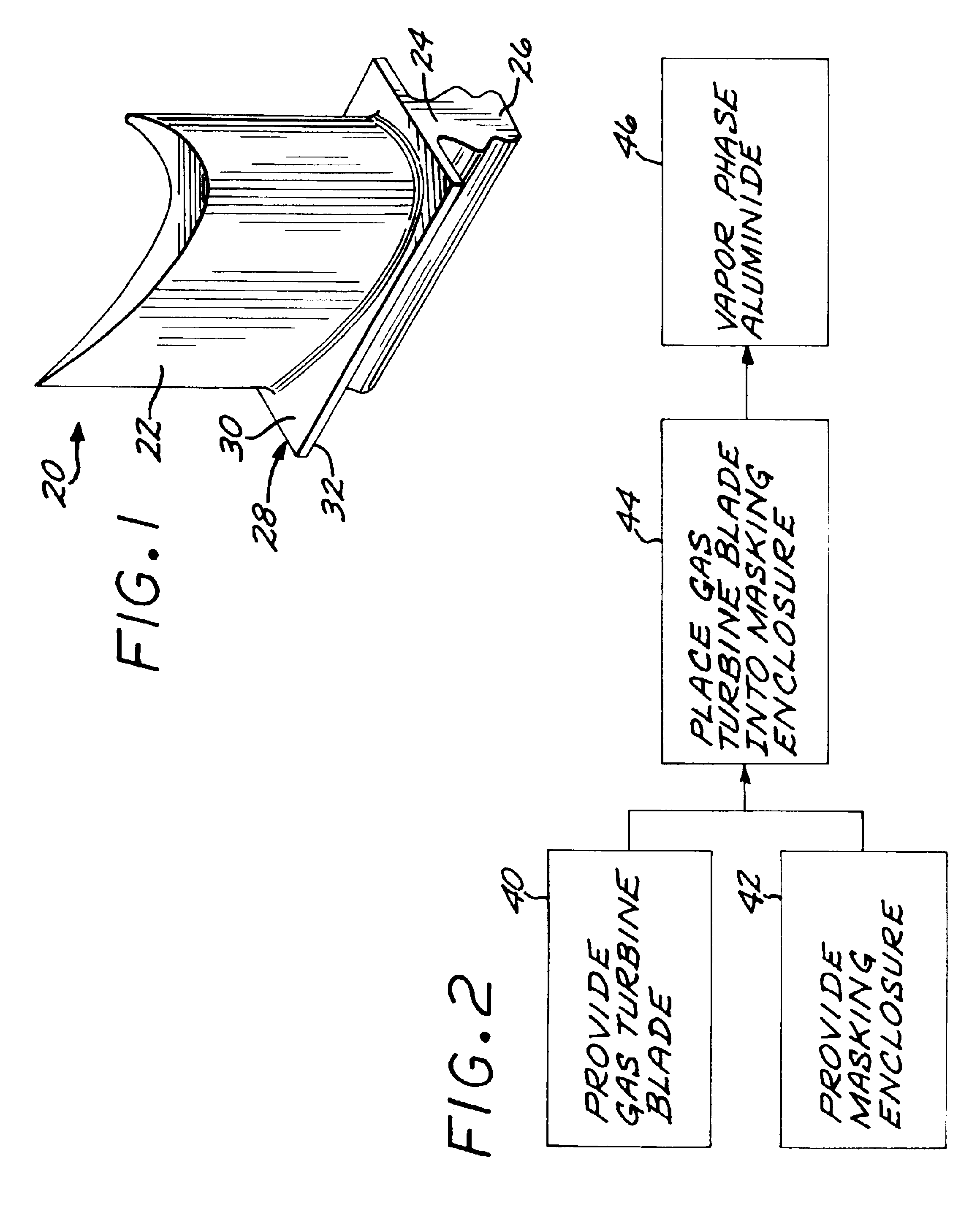Method for vapor phase aluminiding of a gas turbine blade partially masked with a masking enclosure
- Summary
- Abstract
- Description
- Claims
- Application Information
AI Technical Summary
Benefits of technology
Problems solved by technology
Method used
Image
Examples
Embodiment Construction
FIG. 1 depicts a gas turbine blade 20 which has preferably previously been in service, or which may be a new-make article. The gas turbine blade 20 has an airfoil 22 against which the flow of hot combustion gas impinges during service operation, a downwardly extending shank 24, and an attachment in the form of a dovetail 26 which attaches the gas turbine blade 20 to a gas turbine disk (not shown) of the gas turbine engine. A platform 28 extends transversely outwardly at a location between the airfoil 22 and the shank 24 and dovetail 26. The platform 28 has a top surface 30 adjacent to the airfoil 22, and a bottom surface 32 (sometimes termed an “underside” of the platform) adjacent to the shank 24 and the dovetail 26. An example of a gas turbine blade 20 with which the present approach may be used is the CF34-3B1 high pressure turbine blade, although the invention is not so limited.
The entire gas turbine blade 20 is preferably made of a nickel-base superalloy. A nickel-base alloy ha...
PUM
| Property | Measurement | Unit |
|---|---|---|
| Length | aaaaa | aaaaa |
| Length | aaaaa | aaaaa |
| Shape | aaaaa | aaaaa |
Abstract
Description
Claims
Application Information
 Login to View More
Login to View More - R&D
- Intellectual Property
- Life Sciences
- Materials
- Tech Scout
- Unparalleled Data Quality
- Higher Quality Content
- 60% Fewer Hallucinations
Browse by: Latest US Patents, China's latest patents, Technical Efficacy Thesaurus, Application Domain, Technology Topic, Popular Technical Reports.
© 2025 PatSnap. All rights reserved.Legal|Privacy policy|Modern Slavery Act Transparency Statement|Sitemap|About US| Contact US: help@patsnap.com



